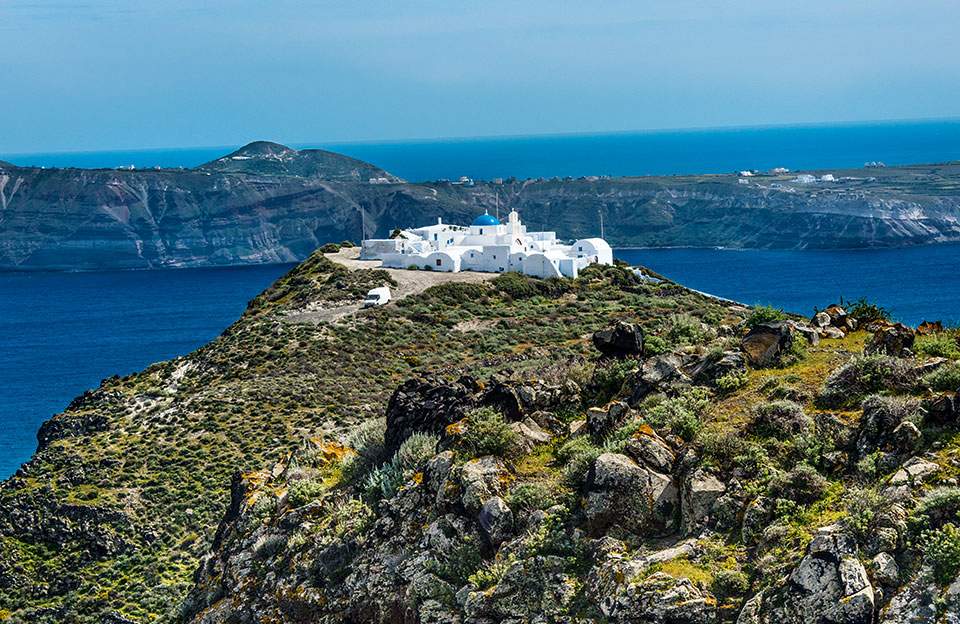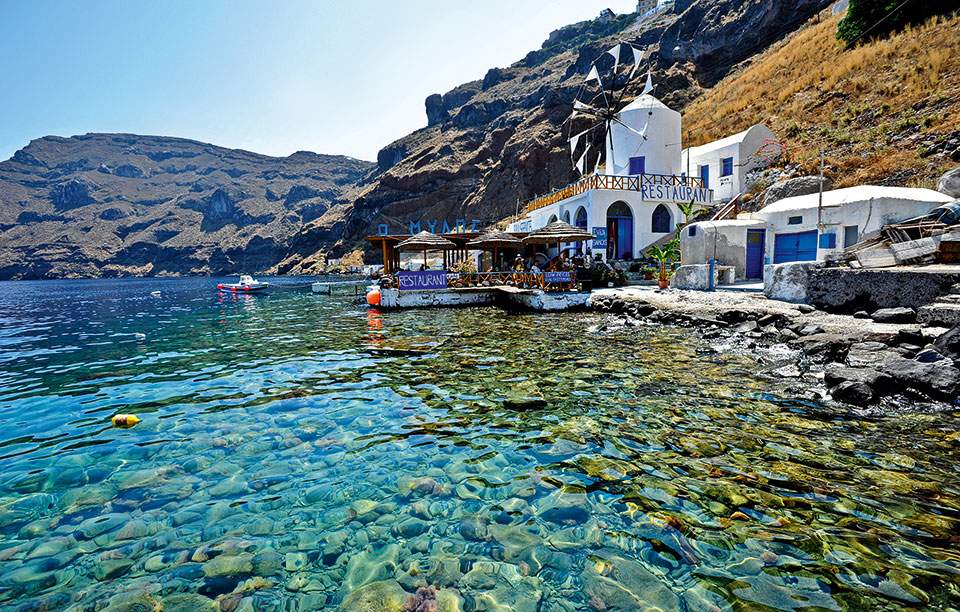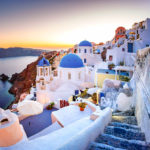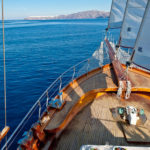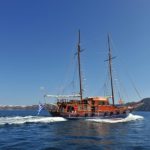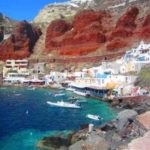Thirasia
Small Thirasia is found at a breathing distance from Santorini but differs a lot from it. It is a serene small Cycladic island, where roughly 300 people live, mainly fishermen and farmers. In Thirasia time seems to have stopped in another period.Tourist boats which during summer make daily excursions from neighbouring Santorini constitute a small break in the quiet course of the island.
Thirasia, Santorini and Aspronisi, were parts of the same island, Strongili in the past. The separate islands resulted after the volcanic explosion of 1500 B.C. that created the marine space of the caldera, when the water covered the ground in the interior of the island. Thus the original island, named Strongili in the Classic years, gave its place to five smaller, with larger that of Thira and with Thirasia second in size.
Today Thirasia is connected with Santorini by fishing boat. Because of its volcanic origin it has abrupt coasts and few beaches. Hora of Thirasia is Manolas, a typical Cycladic settlement hanging at the edge of the caldera, from where the view to Santorini is magical. Small houses and the characteristic “vaulted” residences - dug in compact volcanic material horizontal openings, which with the addition of a wall, shape a house, old windmills, narrow paved streets with traditional shops and the smell of freshly baked bread from the traditional bakery are certain characteristic pictures of Hora. Here, calmness of the traditional lifestyle is immediately seen. In Manolas you will find completely equipped lodgings with views to the caldera, cafes and restaurants with marvellous homemade food. The church of Agios Konstantinos from 1874 dominates in the settlement.
Cobbled steps lead from Hora to Korfos, the old harbour of the island, with its windmill,fishing boats and picturesque taverns, where you will enjoy fresh fish and amazing titbits in front of the sea. Mules will patiently take you to the harbour, while you observe the astonishing view to the volcano.
At the northern utmost of the island we find Riva, the harbour where ferries from Piraeus, Athinio of Santorini, and boats from Ammoudi of Oia, dock. Here you will find picturesque fish taverns and the splendid Black Beach with crystal waters. On a hill above the harbour, we find the chapel of Agia Irini, Santa Irini in Latin, which gave Thira the name Santorini in the years of Markos Sanoudos.
On the eastern side of the island you will see volumes of white lava, where among them, picturesque gorges are shaped. In such a gorge Agrilia is built and Potamos, a village with many vaulted houses and courtyards full of flowers. The churches of Agios Dimitrios and Panagia Giatraina, dominate in Potamos.
Among the whitewashed houses and the colourful steps, in a beautiful Aegean setting, where blue sky meets dark barren volcanic ground, one can embrace the Aegean Sea in a calm and humble way.Size and morphology of the ground of Thirasia encourage walks, which is the best way for the visitor to get to know the island. Select one of the old paths that connect the settlements or passes from the plain.Small Thirasia is found at a breathing distance from Santorini but differs a lot from it. It is a serene small Cycladic island, where roughly 300 people live, mainly fishermen and farmers. In Thirasia time seems to have stopped in another period.Tourist boats which during summer make daily excursions from neighbouring Santorini constitute a small break in the quiet course of the island.
Thirasia, Santorini and Aspronisi, were parts of the same island, Strongili in the past. The separate islands resulted after the volcanic explosion of 1500 B.C. that created the marine space of the caldera, when the water covered the ground in the interior of the island. Thus the original island, named Strongili in the Classic years, gave its place to five smaller, with larger that of Thira and with Thirasia second in size.

